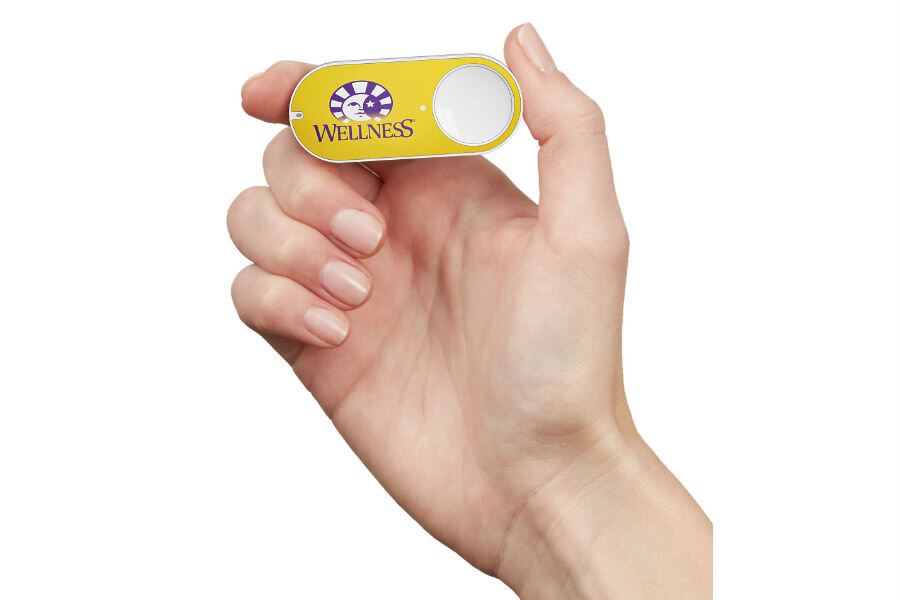Will Amazon's Dash Buttons change how we order products?
Loading...
One year after introducing customers to its fastest online ordering system yet, Amazon is expanding its lineup of the push-to-order Dash Buttons.
The small gadgets are little more than branded clickers that, once connected to an Amazon account, allow users to place orders with a simple tap.
The Dash Button initiative launched last March with a line of around 30 brands of food, drink, and household products – part of Amazon’s Dash Replenishment Service, which also includes certain connected devices such as printers and water filters that order new stock for themselves when running low.
On Thursday, Amazon announced its rollout of dozens more Dash Buttons, expanding the line to more than 100 brands. Currently, only Amazon Prime members have access to the WiFi devices, which instantly places orders that are then processed with Prime’s two-day shipping.
The more than 70 new brands to receive the Dash treatment include Brawny, Doritos, Lysol, and Quaker.
"We’re thrilled with the positive response we’ve seen for Dash Buttons – and we heard loud and clear from customers that they wanted more brands, more categories, and more products,” said Dash director Daniel Rausch in a company release.
When Amazon first introduced Dash Buttons a year ago, many greeted the announcement with skepticism, and some suggested that it was a hoax coming ahead of April Fools’ Day. Per Amazon, the buttons have turned out to be anything but a joke.
Mr. Rausch said that, among its Prime-exclusive user base, Dash Button orders grew by 75 percent over the last financial quarter. Dash Buttons are now used once per minute, “helping ensure [customers] never run out of their everyday essentials,” said Rausch.
Dash also helps the companies who get the buttons. When consumers have a one-touch option for reordering their merchandise, it eliminates competition.
“Brands have been clamoring to be in the program,” Rausch told The New York Times.
Dash's expansion fits into Amazon’s efforts to streamline online shopping. While Dash relies on customers physically acting when they need to reorder certain goods, Amazon has already filed a patent for an “anticipatory package shipping” system that could analyze shoppers’ habits and preemptively deliver products they need, although no official announcement of such a service has been made by the company.
Dash Buttons cost consumers $4.99, but come with an equal amount of Amazon.com credit upon the first click, essentially making them free. Dash preferences can be edited via users’ Amazon accounts, and the next time they press the Button their new order will be placed.
“Honestly, I love being able to just push the button when I get low on trash bags and a new box appears at my doorstep two days later,” Amazon user Christy P. wrote, per the company. “It couldn't be any easier than that.”
“[I]t’s fun and efficient,” user Pedro S. said.








